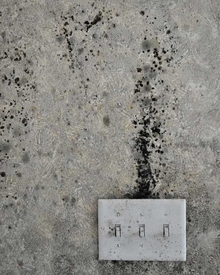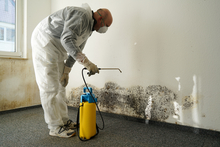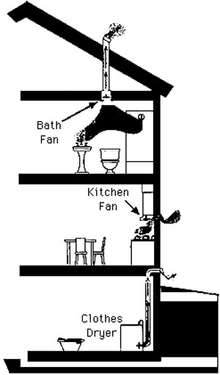What are molds?
Molds are microorganisms. They are found everywhere. They can grow on almost anything if it is moist enough. Inside your home molds grow quickly on damp surfaces like bathroom walls and trim around windows. Molds may look like furry growth, black stains, or specks of black, white, orange, green or brown.
What do molds do to our body?
When a growth of mold appears, it can send clouds of invisible bits of mold through the air. These bits of mold can cause infections, allergies, asthma and other breathing problems. To avoid these health problems, keep your home as mold-free as possible.
How does mold get into our homes?
The more people who live in a home, the more likely it is that molds will grow inside it. This is because we release a lot of moisture in the air when we breathe. When we take long hot showers, cook with uncovered pots, dry clothes on an indoor clothesline, or use humidifiers, we also make more moisture for molds to grow. Storing wet firewood, watering many plants, and storing many vegetables like potatoes and squash can make a mold problem more likely, too.
How can I tell if I have a mold problem?
Any part of your home that gets wet is likely to be moldy. Check for:
- Leaks in your roof or plumbing. If water is trapped inside your walls or under your carpet, molds may grow there, although they can't always be seen. See if your walls or rugs have light stains or a strong musty smell.
- Mold in your basement, especially if your basement floods because of rain. Moisture can also seep through your home's concrete foundation and make the bottom of carpets or the inside of a finished wall moldy.
- Water damage around your windows or doors to the outside of the house. In winter, moist air can change to water on these cooler surfaces and cause molds to grow there.
- Mold on walls, ceilings, floors, carpets, books or piles of newspapers. Smell these areas too; sometimes a musty smell is your only clue that you have a mold problem.
How do I get rid of a mold problem?
Use protective equipment
Use protective equipment when working around mold. The following equipment can help minimize exposure to mold:
- Rubber gloves.
- Eye goggles.
- Outer clothing (long sleeves and long pants) that can be easily removed in the work area and laundered or discarded.
- Use an N-95 respirator. These can be found at hardware stores or other large stores that sell home repair supplies.
Clean surfaces
- Scrub all moldy surfaces using a stiff brush, hot water and a soap or detergent that does NOT contain ammonia.
- Collect used liquid with a wet/dry vacuum, mop or sponge.
- Rinse area clean with clean water and dry thoroughly.
Disinfect surfaces
After cleaning the affected area as described above wipe down the wall, ceiling or floor again using a mixture of liquid household chlorine bleach and water.
- If you are cleaning a small area, use 5 cups of water mixed with 1/2 cup bleach.
- If you are cleaning a large area, use a 5-gallon pail of water and add 1/2 gallon of bleach to it.
- Be sure to follow all the directions and warnings on the bleach label.
- Never mix bleach with ammonia; toxic fumes will be produced.
- Be sure to open windows when you use bleach, so you have fresh air to breathe and the bleach does not irritate your lungs.
- Always handle bleach with caution.
Never mix bleach with ammonia; toxic fumes will be produced.
Allow surfaces to air dry
Ideally, surfaces should be allowed to air dry to maximize their contact time with the bleach.
Throw away what can't be cleaned
When molds get inside materials like carpets and mattresses, they can't be cleaned. Throw them away.
Wash or dry clean fabric items
You can get rid of molds in bedding, curtains, drapes and clothes by washing or dry cleaning them. Some non-porous materials can be cleaned.
How to I keep mold from growing in my home?
Keep your home as dry as possible
Repair roof and plumbing leaks right away. Make sure that the ground around the foundation of your house slopes away from the house, so that your basement is less likely to flood.
Use fans to send moisture outside
If your home has kitchen, bathroom or window fans that vent (send) the moist air outside, use them when you cook or take a shower. If you do not have fans, open a window when you cook or shower, cover pots when cooking, and try to take cool, short showers. Dry clothing on a clothesline outside or use a clothes dryer that vents (sends) air outdoors.
Use a dehumidifier
If your basement is damp, get a dehumidifier (not a humidifier, which adds air moisture) to remove moisture from the air. If you have an air conditioner to run in the summer, it will remove some moisture as it cools the air. When you use an air conditioner or dehumidifier, don't keep your windows open if it is damp outside.
Don't finish your basement unless it's very dry
Don't finish the walls of your basement with insulation and wallboard unless your basement is very dry. Also avoid putting wall-to-wall carpet on your basement floor. If your basement floor is concrete, you can paint it and use area rugs instead. Then you can take the rugs outside to clean and dry them; the rugs aren't as likely to get moldy.
Reviewed in 2018




